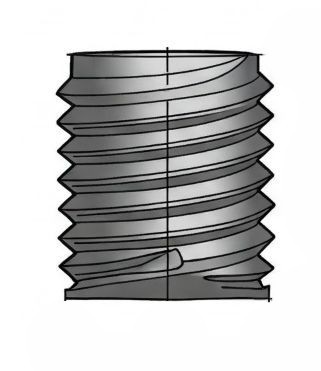BSP (British Standard Pipe) threads are a widely used standard for connecting pipes and fittings in various applications. Understanding BSP thread specifications is crucial for ensuring proper assembly, leak-free connections, and the overall integrity of systems.
This quick reference guide will provide an overview of BSP threads, their types, and important considerations for their selection and use.
What Are BSP Threads?
BSP threads are a standardized system for connecting pipes and fittings, developed in the United Kingdom. Their distinctive thread profile characterizes them and are commonly used in plumbing, gas, and hydraulic systems.
Where BSP threads are commonly used:
➡ United Kingdom
➡ Europe
➡ Asia
➡ Australia
BSP Thread Types
➡️ BSPP (British Standard Pipe Parallel):
➡ These threads have parallel sides, meaning they maintain the same diameter along their length.
➡ They typically rely on washers or O-rings for sealing.
➡ Common applications include general plumbing, low-pressure applications, and where disassembly is frequent.
➡️ BSPT (British Standard Pipe Tapered):
➡ These threads are tapered, meaning the diameter gradually decreases along the length of the thread.
➡ The taper creates a tight seal without the need for additional washers or seals.
➡ Commonly used in high-pressure applications, such as hydraulic systems and gas lines.
BSP Thread Specifications
➡️ Thread sizes and pitch: BSP threads are available in various sizes, typically designated by their nominal pipe size (e.g., 1/2″, 3/4″, 1″).
➡️ Standard BSP thread dimensions:
|
BSP Size |
Major Diameter (mm) |
Pitch (mm) |
Threads per Inch |
|
1/8″ |
9.728 |
0.907 |
28 |
|
1/4″ |
13.157 |
1.337 |
19 |
|
3/8″ |
16.662 |
1.337 |
19 |
|
1/2″ |
20.995 |
1.814 |
14 |
|
3/4″ |
26.441 |
1.814 |
14 |
|
1″ |
33.249 |
2.309 |
11 |
|
1-1/4″ |
41.910 |
2.309 |
11 |
|
1-1/2″ |
47.803 |
2.309 |
11 |
|
2″ |
59.614 |
2.309 |
11 |
➡️ Thread angle: BSP threads have a 55-degree Whitworth thread form.
How to Identify BSP Threads
➡️ Measuring thread diameter: Use a micrometer or calipers to measure the outside diameter of the thread.
➡️ Checking thread pitch: Use a thread gauge to determine the number of threads per inch.
➡️ Differences between BSPP and BSPT identification: BSPP threads will maintain a constant diameter, while BSPT threads will gradually decrease in diameter.
BSP vs. Other Thread Standards
BSP vs. NPT (National Pipe Thread)
➡️ Key differences:
➡ Thread angle: BSP uses a 55-degree Whitworth profile, while NPT uses a 60-degree profile.
➡ Sealing: BSPP relies on external seals, while NPT typically seals by contact between the tapered threads.
➡ Applications: BSP is more common in many parts of the world outside North America, while NPT is widely used in North America.
BSP vs. Metric Threads
➡️ Key differences: BSP uses imperial units (inches), while metric threads use millimeters.
➡️ Conversion considerations and adapters: Adapters are available to convert between BSP and metric threads.
BSP Thread Applications
➡️ Plumbing and pipe fittings: Water supply lines, gas lines, drainage systems.
➡️ Hydraulic and pneumatic systems: High-pressure systems in industrial machinery.
➡️ Industrial and manufacturing uses: Various industrial equipment and processes.
Common BSP Thread Mistakes to Avoid
➡️ Mismatching BSPP and BSPT threads: Using BSPP threads in applications designed for BSPT, or vice versa, can lead to leaks and system failures.
➡️ Confusing BSP with NPT threads: Using the wrong thread type can result in incompatible connections.
➡️ Incorrect sealing methods: Using incorrect or inadequate sealing methods can cause leaks and system malfunctions.
BSP Thread Selection Guide
➡️ Choosing the right BSP thread type: Select BSPP for general plumbing and low-pressure applications, and BSPT for high-pressure applications.
➡️ Recommended sealing methods:
➡ BSPP: Use PTFE tape, washers, or O-rings for sealing.
➡ BSPT: Typically relies on the taper for sealing, but may require additional sealing in some cases.
Conclusion
Understanding BSP thread specifications is crucial for ensuring the proper selection and use of fittings and components in various applications. You can ensure leak-free, reliable, and safe connections by carefully considering the thread type, size, and application requirements.
Always refer to appropriate reference charts and use accurate measuring tools to ensure proper thread identification and selection.
Post time: Feb-10-2025


